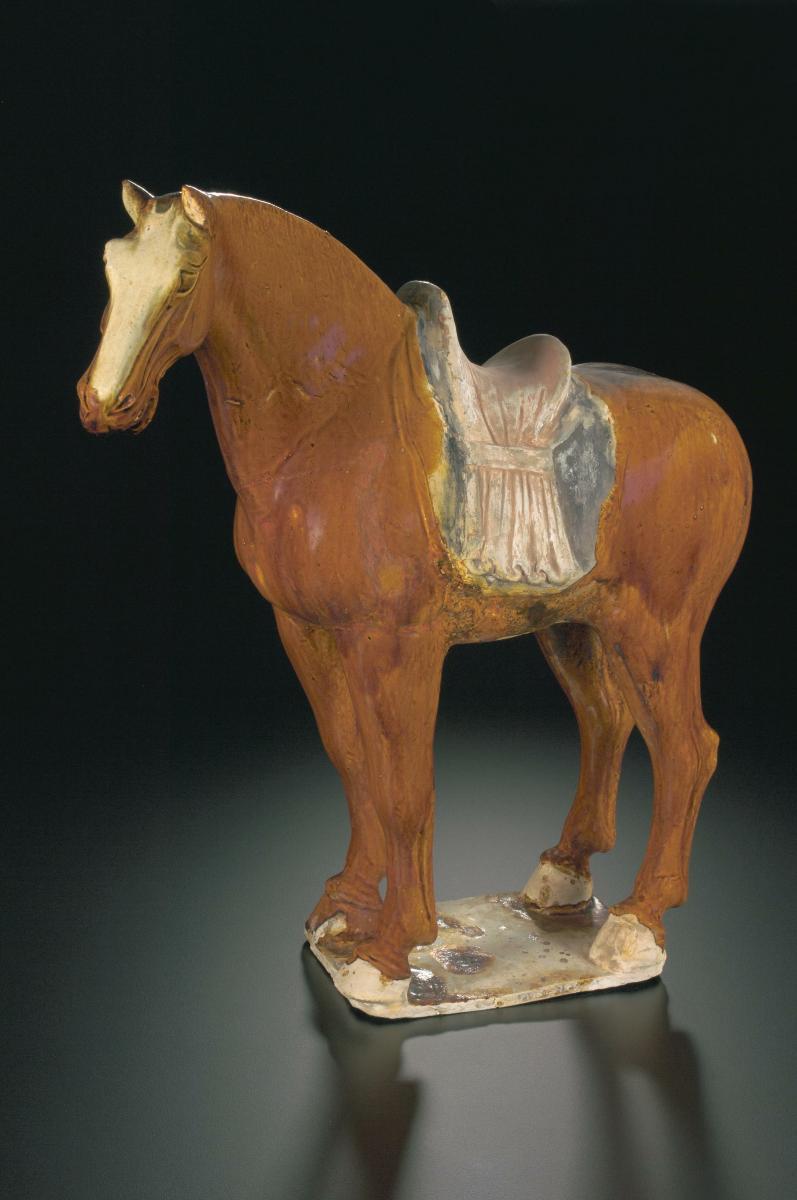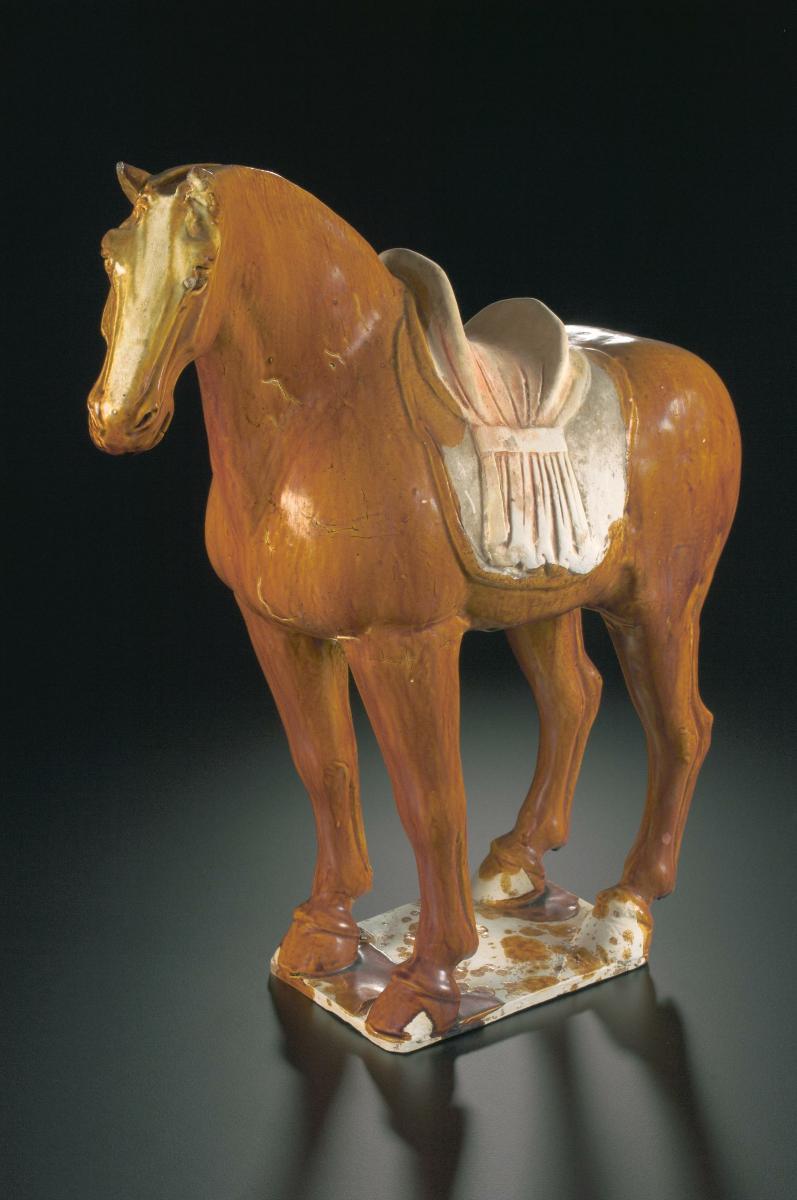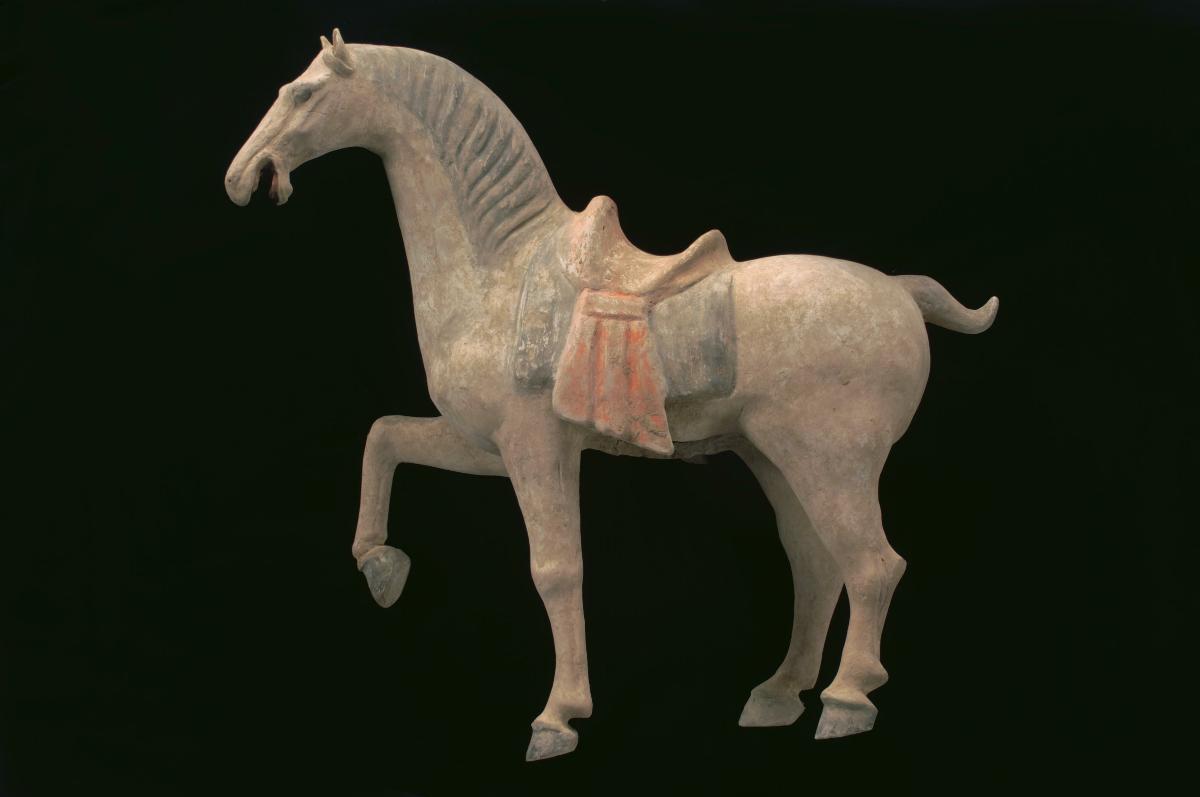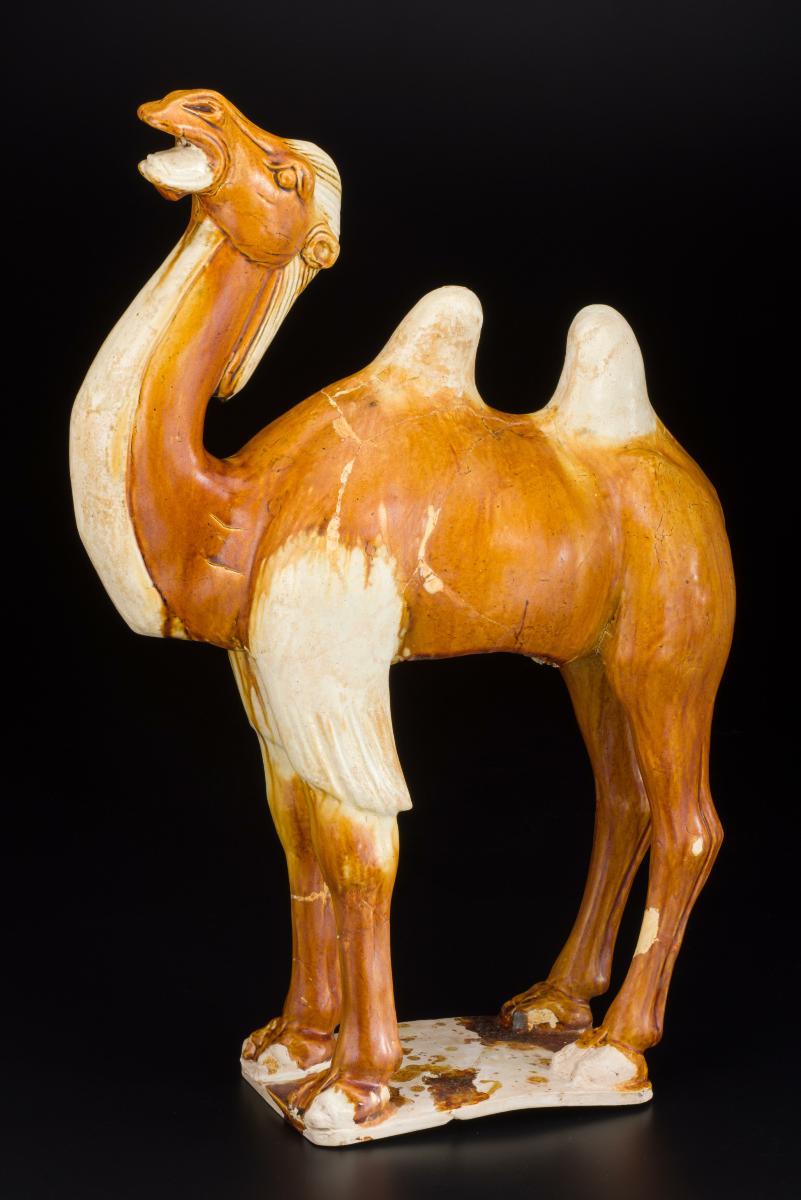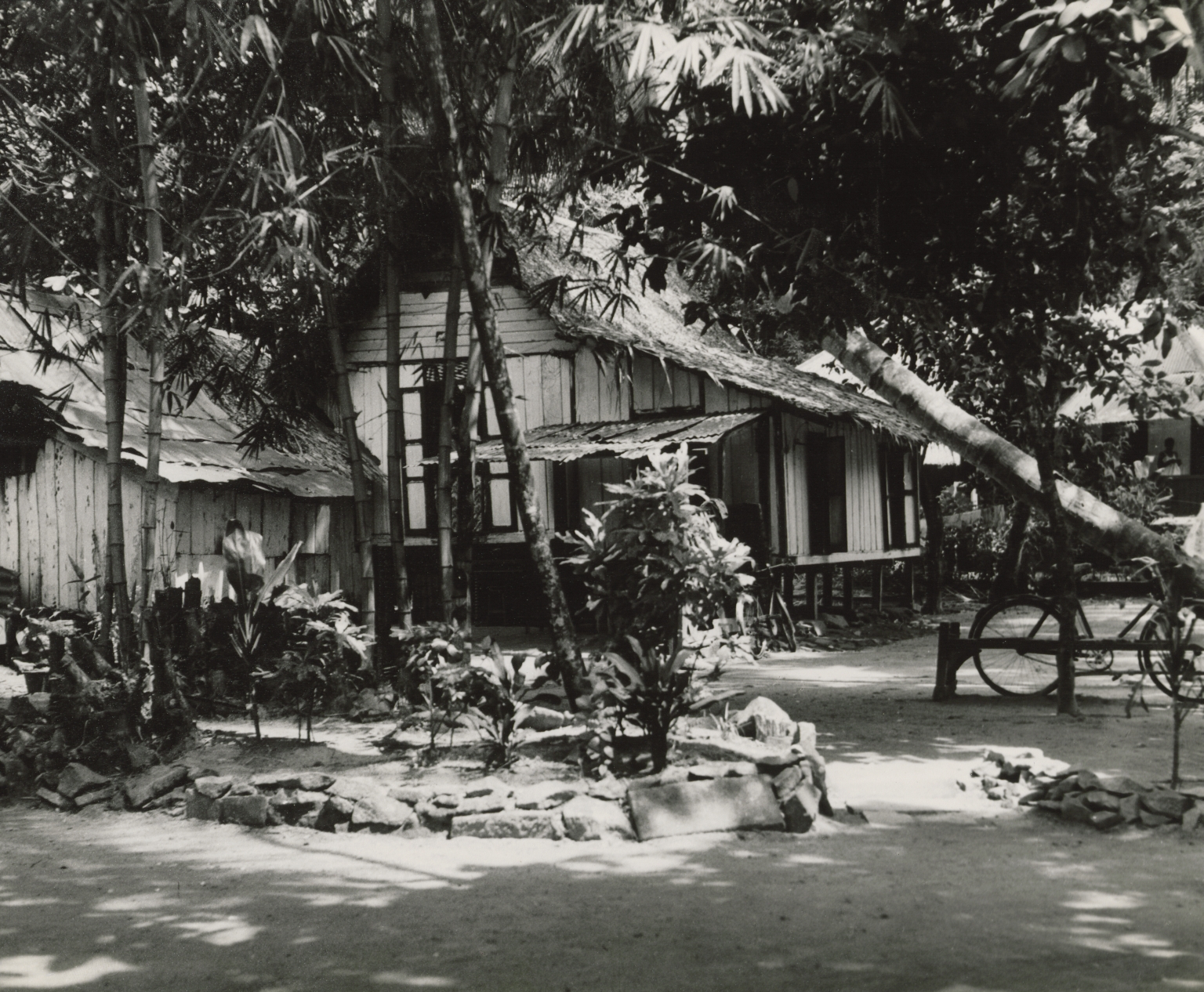This horse would have been part of a group burial wares found in the tombs of ruling elite. It is decorated with colourful pigments and a shiny amber lead glaze. The practice of using lead-glazed burial wares had already started during the Han dynasty (206 BCE-220 CE). This glaze technology further developed during the Tang dynasty (618-906) into ‘sancai’ (‘three-colour’) glaze. It included colours such as cream, amber, brown and blue. This tradition of decoration continued into the Ming period. The importance of horses to the Chinese ruling class can be seen in the large numbers of pottery sculptures that have been found in Chinese tombs. Horses featured prominently in Chinese military tactics against invasions. They imported a superior breed of horse from Ferghana (now Turkmenistan) known as ‘blood-sweating’ horse. The term is used to refer to the parasites that fed on the horse’s blood and tinged the sweat pink. So vastly superior were they over the local Chinese breeds that they were endowed with a mythological reputation as ‘heavenly horses’ able to travel a thousand li (640km) in a single day and carry their riders to immortality. Apart from military uses, the horse also played a central role in the long-distance trade over the Silk Road.





